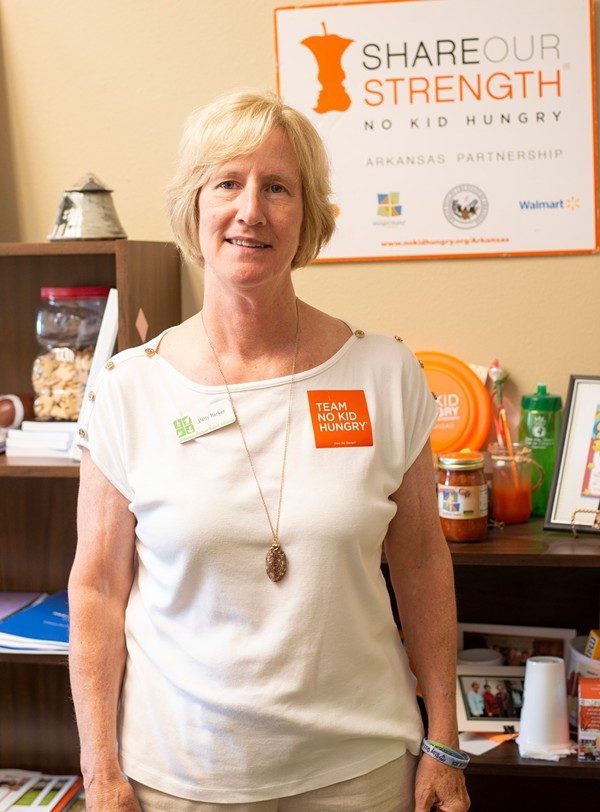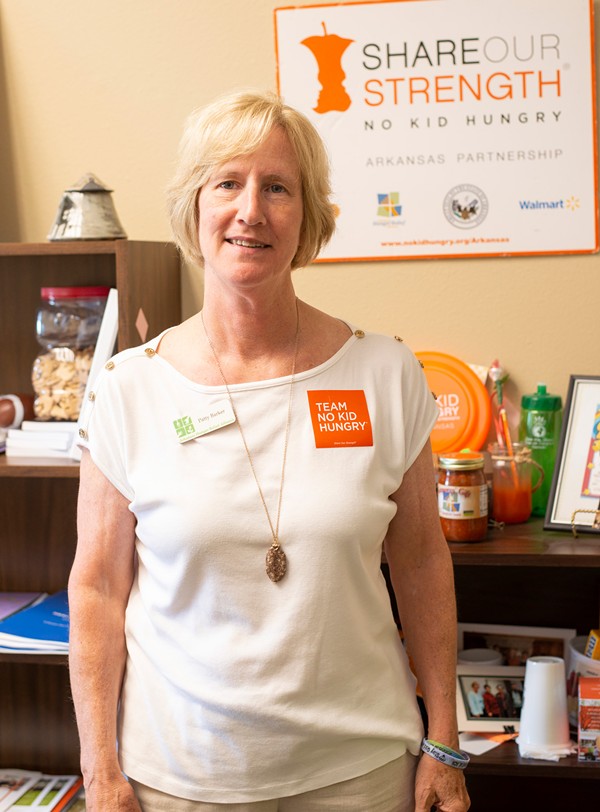
Until recently, students who got free or reduced-price lunches in Fordyce schools found themselves the subjects of taunt. Word would get around about who received government assistance, and "there was always a stigma attached to it," Fordyce School District Superintendent Albert Snow said. "Many parents would do anything to get off that list."
Not anymore.
Now, Fordyce is one of 58 Arkansas school districts and charter schools that allow all students to eat breakfast and lunch for free, thanks to a federal student nutrition program. The Community Eligibility Provision — commonly referred to among school officials as CEP — is a section of the federal Healthy, Hunger-Free Kids Act. President Barack Obama signed the bipartisan act into law in 2010. Former Arkansas Gov. Mike Huckabee supported the law and joined a statement from the White House praising its passage.
"A breakfast or a lunch tray needs to be filled with foods that will give the energy [students] need to be active and succeed in school," first lady Michelle Obama said after the signing of the Healthy, Hunger-Free Kids Act.
CEP eligibility is limited to districts or schools with at least 40 percent of their students certified for free school meals. Instead of collecting individual program applications detailing household income, the percentage can be gleaned through the use of data showing students receiving benefits through the Supplemental Nutrition Assistance Program (commonly referred to as SNAP, or food stamps) or Temporary Aid for Needy Families (TANF). This data is verified through other government agencies.
For eligible districts, the CEP does two key things: First, it relaxes income reporting requirements for school districts, easing the burden of annually seeking and collecting detailed statements from parents. Second, it reimburses districts by a factor of 1.6 for every student documented as eligible for free and reduced-price meals, taking into account a historical undercount of needy students.
In exchange, districts must provide all student meals at no charge, even to those whose parents earn enough that their children would otherwise be ineligible to participate. The districts must make up with their own funds the cafeteria costs not reimbursed by the U.S. Department of Agriculture, which funds the free and reduced-price meals program.
Without CEP, generally only students whose household incomes are below 185 percent of the Federal Poverty Limit — $46,435 for a family of four, for example — would be eligible for a free or reduced-price lunch.
Snow said the program is getting rave reviews in Fordyce, which has an enrollment of 800 students in grades K-12. Fordyce has lost a paper mill and suffers from other economic troubles; the superintendent estimates about 70 percent of his students would be eligible for free or reduced-price lunches without CEP.
"We're a fairly high-poverty area, so providing two meals a day for our kids is a great benefit for many of them," he said. "We'll continue doing it as long as it's not draining any finances, but right now we're able to maintain break-even status."
Some education and health advocates in Arkansas are urging more districts to follow suit and sign up for CEP.
"It's a boon to school personnel that they don't have to deal with applications. It helps with administration, and more students are getting fed," said Cory Biggs, associate director of Forward Arkansas, a nonprofit organization that works with districts on innovations.
Yet the Arkansas Hunger Relief Alliance estimates that only 57 percent of eligible districts in Arkansas have signed up for CEP. For most districts, joining CEP should be a "no-brainer," said Patty Barker, the No Kid Hungry campaign director for the Alliance.
The Child Nutrition Unit of the Arkansas Department of Education has conducted trainings and offered presentations at conferences about the benefits of CEP, department spokeswoman Kim Friedman said, and the number of districts participating in CEP has grown over the past five years, she said.
The Mineral Springs School District and Little Rock Preparatory Academy, a charter school, were the first to take advantage of CEP, in the 2014-15 school year, the first year it was available in Arkansas. The next year, 22 districts and charter schools signed up. The number more than doubled to 45 in 2016-17 and increased to 58 in 2017-18, according to the Department of Education.
The USDA says it "recognizes that CEP is not a good fit for all schools," especially those with lower poverty rates. Even those that meet the 40 percent eligibility threshold could have a tough time funding the meals not reimbursed by the federal government.
Friedman notes that the percentage eligibility within a district "has to be around 62-63 percent, so when the 1.6 multiplier is applied it will equal 100 percent." This allows the districts to be reimbursed for all meals served. Any lower percentage means there is a balance that must be made up by the districts.
Providing free meals to all students isn't a new idea. Some districts have been doing so through a USDA program known as Provision 2, which has been around since 1980. It works much the same way as CEP in that districts must make up the costs for students not eligible.
There are some differences, though, between CEP and Provision 2. According to the USDA, Provision 2 eligibility is based on actual free and reduced-price meal applications, not SNAP or other data used under CEP. That means that initially districts must perform more paperwork with Provision 2 than with CEP. And, there is no 1.6 multiplier used to increase reimbursement as under CEP.
For some districts, it may still make sense to remain on Provision 2 instead of switching to CEP, Friedman said.
In Arkansas, 11 districts remain on Provision 2. Little Rock has 30 schools on Provision 2 and is the only urban district on the Provision 2 list. Among the larger districts on CEP are Hot Springs, Jonesboro, West Memphis, Pine Bluff, North Little Rock and Jacksonville/North Pulaski.
Regardless, the student benefit is the same under Provision 2 or CEP. "All children eat at no charge to the household for meals at school," Friedman said.
Shortly after the Lake View school funding decision of 2002, Provision 2 caused a bit of a stir at the legislature. The revised school funding formula for 2004-05 added extra money for districts with high poverty rates, which was based on free and reduced-price lunches.
But the funding formula didn't take into account the districts claiming the 100 percent free and reduced-price lunch rate through Provision 2. That led to inflated poverty counts, which funneled a combined $11 million extra to 10 districts. Legislators tweaked the formula in 2005 to better account for Provision 2 and to more accurately fund high poverty districts.
Some superintendents sued over the lost state funding, prompting the late Rep. Jodie Mahony (D-El Dorado) to call them "clowns." The superintendents lost their suit.
Today, Provision 2 and CEP haven't created any controversies, not even from anyone complaining that the federal government shouldn't be spending money on school lunches, advocates say.
Most opposition results from local school officials being "resistant to change just in general and not wanting to read through federal regulations," Biggs said.
Vivian Nicholson, breakfast program director with the Hunger Relief Alliance, said some districts think providing free meals to all students will be too much trouble, but once they hear from other districts, "they are sold" on the idea.
"It takes away the peer pressure that 'I'm free and you are paid,' " she said. "We stop that 'I'm poor and you're not' with CEP. It's part of the school day. We all ride the bus. We all have desks. We have books. We all ought to eat together."
June 30 is the deadline for more districts to sign up for the program.
This reporting is courtesy of the Arkansas Nonprofit News Network, an independent, nonpartisan project dedicated to producing journalism that matters to Arkansans. Find out more at arknews.org.
